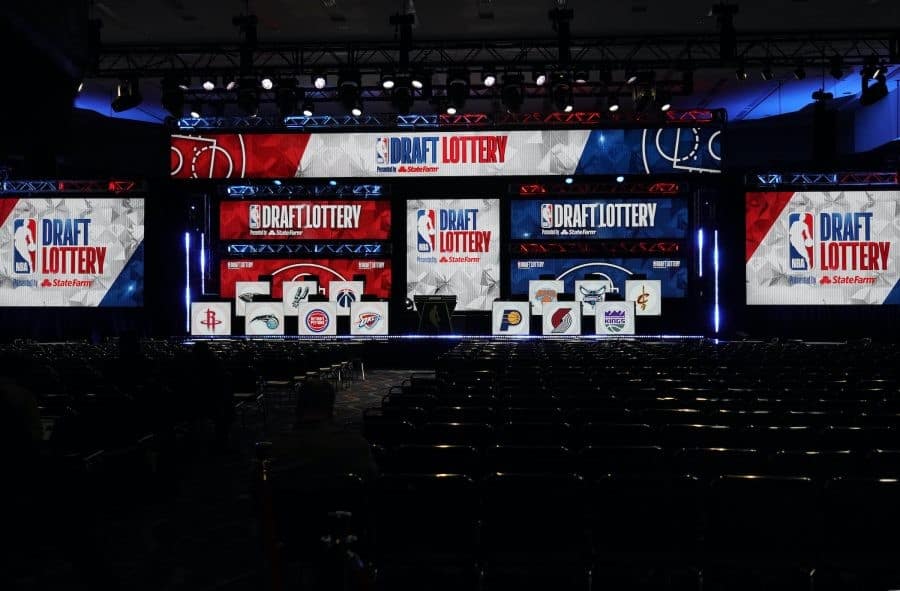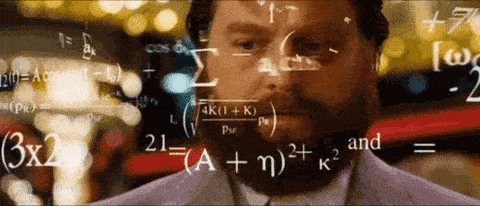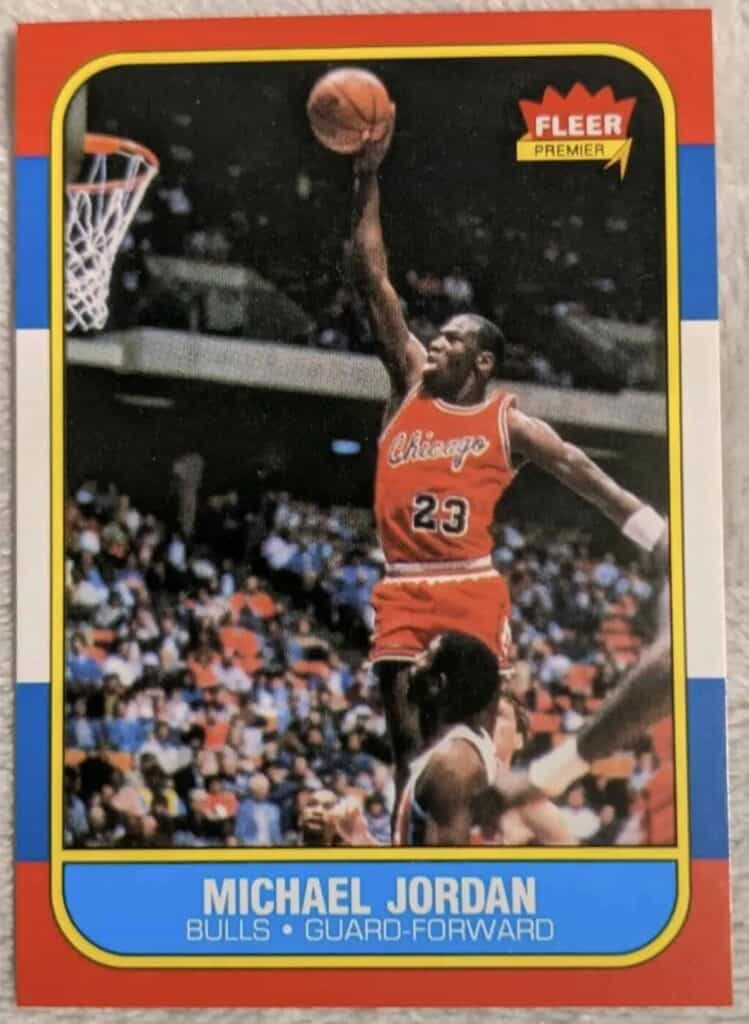Every year, for at least a handful of NBA teams fans, the focus is not on winning the coveted Larry O’brien Trophy. They know their teams don’t have the strategy or players to win it all, instead they focus on losing. If their team finishes with one of the worst records in the league, if the Lottery Balls bounce their way AND if after all that their Front Office team are able to make the right choice, maybe just maybe they’ll have a new hero at their Franchise for the next decade and finally. The losing can stop.
How does the NBA Draft Lottery work? The NBA Draft Lottery works by taking the 14 NBA teams that did not make the playoffs, assessing their records and assigning them a percentage chance of winning picks in the upcoming NBA Draft. More specifically the first 4 picks are drawn via the lottery, with the remaining 10 non-Playoff teams being placed in reverse order of record. Finally the Playoff 16 are added afterwards, also in reverse order of record.

Clear? Thought so. Below we dive in deeper and break down each stage of the lottery process. If you do want to read the article then we have put together a video explaining the NBA draft lottery.
What is the current format for the Draft Lottery?
Let’s start at the dawn of a new beginning. Tanking had been a growing concern, with teams losing on purpose in an attempt to secure a superstar through the Draft process. The lottery had existed for a few decades, randomizing the chances a little, but there was still a mathematical incentive to have the worst record and hope for a good pick in the Draft. So in 2017 the NBA Board of Governors approved changes to the lottery system. The new format, which didn’t begin until the the 2019 Draft, would see the NBA Draft Lottery bring the following changes;
The team with the worst record will receive no worse than the fifth pick. Before 2019 the team with the worst record would have been guaranteed to pick no lower than fourth.
It leveled the odds at the top of the NBA Draft Lottery so that the teams with the three worst regular-season records each have a 14 percent chance of winning the lottery. Pre-2019 the team with the worst record had 25 percent of winning the lottery, the second a 19.9 percent, with the third having a 15.6 percent chance of taking the top pick.
These changes were significant as they meant that mathematically there was no difference between having the worst or the third worst record. With the overall chance of taking the top pick in the NBA draft being dramatically diminished. Turning the 76ers Process into what would under these rules be seen as a crazy gamble. Losing no longer had the draw it once did.
How specifically does the NBA Draft Lottery work?
Current rules state that the NBA Draft Lottery will determine the order of selection for the first 14 picks of the Draft. However this might not work how you think. It’s not as simple as throwing balls representing each of the 14 teams into a mixer and pulling them out. In order to ensure the very specific odds are achieved, the following process is used;
- Drawings will be conducted to determine the first four picks in the NBA Draft. The remainder of the “lottery teams” will select in positions five through 14 in reverse order of their regular-season records.
- The actual lottery procedure takes place in a secure room before the TV show airs the selections around the world. This draw is witnessed by a media member, NBA officials and a representative of the accounting firm Ernst & Young.
- Fourteen ping-pong balls numbered 1 through 14 will be placed in a lottery machine. There are 1,001 possible combinations when four balls are drawn out of 14, without regard to their order of selection. Before the lottery, 1,000 of those 1,001 combinations will be assigned to the 14 participating lotteryFranchises based on the odds they have been given for their regular season performance.
- The lottery machine is manufactured by the Smart Play Company, a leading manufacturer of state lottery machines throughout the United States. Smart Play also weighs, measures and certifies the ping-pong balls before the drawing.
The drawing process is as follows;
- All 14 balls are placed in the lottery machine and they are mixed for 20 seconds.
- The first ball is removed.
- The remaining balls are mixed in the lottery machine for another 10 seconds.
- The second ball is removed.
- There is a 10-second mix.
- The third ball is removed.
- There is a 10-second mix.
- The fourth ball is removed.
The length of time the balls are mixed is monitored by a timekeeper who faces away from the machine and signals the machine operator after the appropriate amount of time has elapsed.
The Franchise that has been assigned that specific combination will receive the first pick in that year’s NBA Draft. The process is repeated with the balls placed back in the machine for the second through fourth picks.
If a combination for the same team comes up more than once, the result is discarded and another four-ball combination is selected. Similarly if the one unassigned combination is drawn, the result is discarded and the balls are drawn again. This unassigned combination serves no other purpose than its vacancy allowing the odds to be constructed from 1,000 picks, meaning they can be controlled to a decimal place. This is the same reason, they don’t just have 100 balls each representing a team with 14 balls going to the team with the worst record and so on. This would only allow the lottery odds to be controlled to whole percentage numbers.
An independent partner from Ernst & Young oversees the entire lottery process. They are also responsible for creating the sealed envelopes that are later opened on TV for dramatic effect, making the result of the lottery public.
The envelopes are opened in reverse order so that the franchise whose logo is in the last envelope opened on TV is the team that won the first pick through the lottery process moments earlier.
What are the odds for each team in the Draft Lottery?

Below is a list of the current lottery odds for the first draft pick assigned to teams by reverse order of their regular season record. Team 1 has the worst record, Team 14 had the best record of a non-Playoff qualifying team.
NBA Draft Lottery Odds
| Team 1 | 14.00% |
| Team 2 | 14.00% |
| Team 3 | 14.00% |
| Team 4 | 12.50% |
| Team 5 | 10.50% |
| Team 6 | 9.00% |
| Team 7 | 7.50% |
| Team 8 | 4.50% |
| Team 9 | 4.50% |
| Team 10 | 4.50% |
| Team 11 | 1.80% |
| Team 12 | 1.70% |
| Team 13 | 1.00% |
| Team 14 | 0.50% |
| Total | 100% |
What is the history of the NBA Draft Lottery and when was it first used?
From 1966 until 1984 the NBA team that finished with the worst record in each conference participated in a coin flip for who would get pick 1 and who would get pick 2. The remaining teams picked in reverse order of their regular-season records.

From 1985 The NBA Board of Governors voted to adopt an unweighted lottery system among the non-playoff teams to determine their order of selection in the first round of the NBA Draft. This included all non-playoff teams being drawn via a lottery with the same odds. The playoff teams would then pick in reverse order of record once the non-playoff team order had been decided. This meant that there was a chance the team with the worst record could end up picking outside of the top 10.
The following year in 1986 a procedural change meant the lottery would now determine the order of selection for the first three teams only. The remaining non-playoff teams would select in inverse order of their regular-season records. Therefore, the team with the worst record would be assured of picking no worse than fourth, the team with the second-worst record no worse than fifth and so on.
In 1990 the NBA introduced a weighted system. The team with the worst regular-season record received 11 chances at the top pick out of a total of 66 (16.7%), the second-worst team got 10 (15.2%) chances and the team with the best record among the non-playoff teams was given 1 (1.5%) chance.
From 1994 a modification was approved by the NBA that increased the chances of the teams with the worst records to win one of the top three picks while decreasing the chances of the teams with the best records. The new system increased the chances of the team with the worst record of drawing the first pick from 16.7 percent to 25 percent, and it decreased the chances of the team with the best record among lottery teams from 1.5 percent to 0.5 percent.
In 2004 NBA Draft Lottery increased to 14 teams with the addition of the Charlotte Bobcats to the NBA. However, as part of their expansion agreement, the Bobcats were locked into the fourth position in the 2004 NBA Draft and therefore did not have a chance to receive other picks in the lottery. (The Bobcats actually traded up in the draft with the LA Clippers taking Emeka Okafor at #2 with the Clippers selecting Shaun Livingston at #4)

The last significant change to the NBA draft Lottery came in 2019 as detailed at the top of this article, flattening the Lottery odds for the teams with the worst 3 records.
